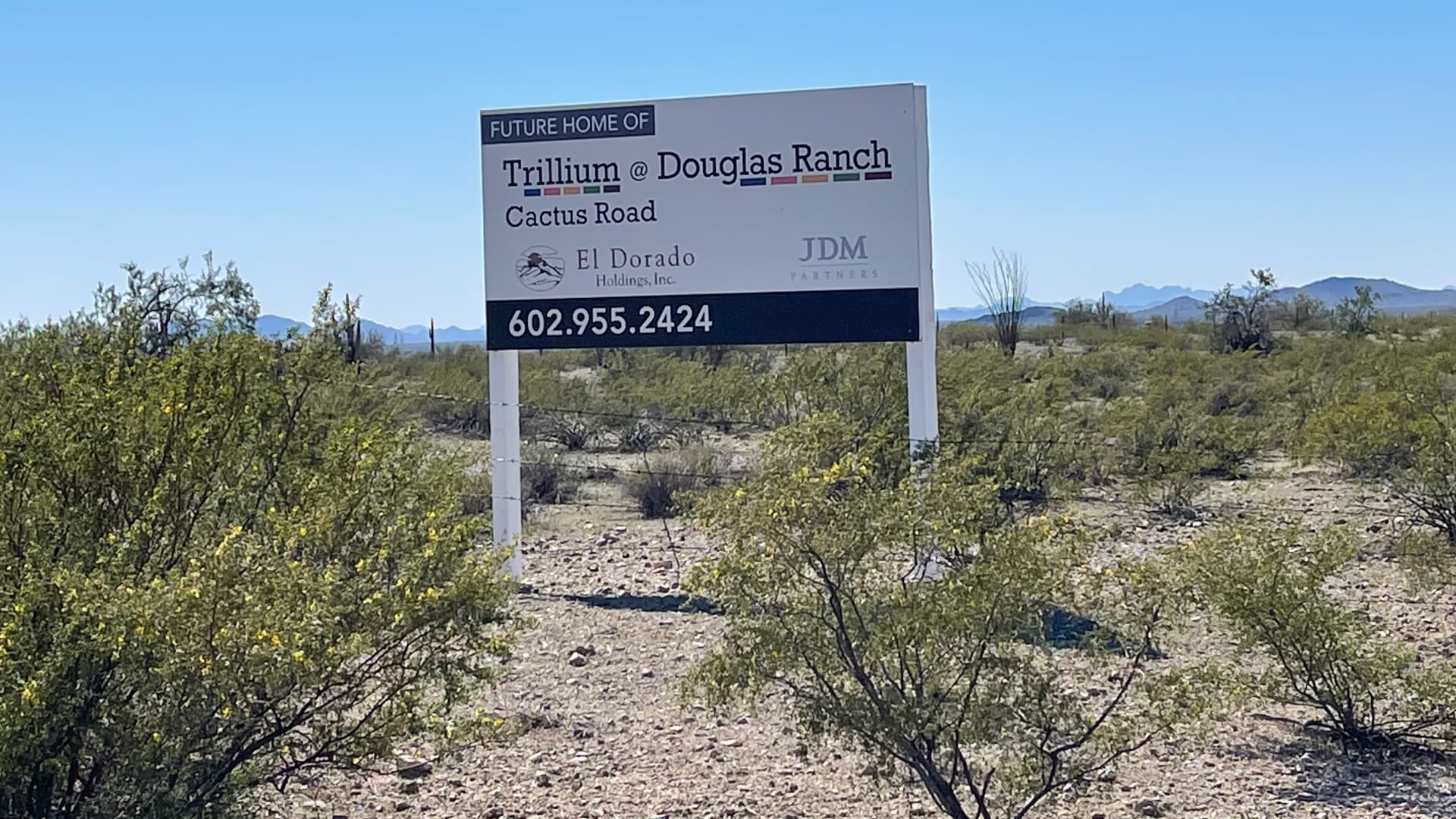Developers are flooding Arizona with homes even as historic Western drought intensifies

California just experienced its driest January and February ever, and the snowpack is dangerously low. As the West enters its third year of drought, water sources are drying up, and restrictions on the Colorado River are now hitting all sectors of the Western economy, inculding homebuilding.
While there is a shortage of water, there is also a shortage of housing. The US currently needs over a million more homes just to meet the current demand, according to an estimate by the National Association of Home Builders. Other estimates are even higher. As the millennial generation hits its prime homebuying years and Gen Z enters the fray, the supply of homes for sale is at a record low. Builders are hampered by high costs for land, labor and materials, so they are focused on the West and areas like the suburbs of Phoenix, Arizona, which are growing rapidly.
On a vast swath of land in Buckeye, Arizona, just west of Phoenix, the Howard Hughes Corporation is developing one of the largest master-planned communities in the nation, Douglas Ranch, flooding the desert with housing.
Howard Hughes CEO David O’Reilly says water will not be a problem.
“Every home will have low flow fixtures, national desert landscaping, drip irrigation and reclamation,” he said, adding, “we work with the local municipalities, the city of Buckeye, all the water districts, to make sure that we’re enacting real conservation measures, not just at our property, but across the entire region.”
The community is projected to have more than a 100,000 homes, bringing in at least 300,000 new residents. Big public builders like Pulte, Taylor Morrison, Lennar, DR Horton and Toll Brothers have already expressed interest in building the homes, according to the Howard Hughes Corporation.
And it’s just one of more than two dozen developments in the works around Phoenix, all as the West is in the midst of its worst drought in more than 1,000 years.
“They’re expecting the growth in this area to be a million people. And there isn’t the water to sustain that growth. Not with groundwater,” said Kathleen Ferris, Senior Water Research Fellow at Arizona State University.
Ferris produced a documentary about the state’s 1980 Groundwater Management Act. It requires developers to prove there is a hundred years-worth of water in the ground on which they’re building. Douglas Ranch sits on the Hassayampa Aquifer, which will be its primary source of water.
“And the problem is that with climate change there aren’t backup water supplies that you can use to save a development that’s based totally on groundwater. If it loses all of its water supply, there’s no water to back that up,” said Ferris.
Mark Stapp is director of Arizona State University’s real estate development program at the W.P. Carey School of Business. He points to various reservoirs that could replenish the groundwater, but admits there is still risk due to the sheer scale of development.
“I would say that there’s a legitimate concern about our future, and policy-makers are very aware of this,” said Stapp.
O’Reilly argues that the current need for housing surpasses future concerns that could be unfounded.
“I don’t think the answer is to tell people that are looking for an affordable home in Arizona, ‘You can’t live here, go somewhere else.’ I think the responsible answer, the thoughtful answer, is to build them affordable homes, but to build it in a self-sustaining manner,” O’Reilly said.
A report last spring from ASU’s Kyle Center for Water Policy warned the amount of groundwater in the Hassayampa subbasin is considerably less than regulators estimate, and that without a change in direction, ” the physical groundwater supply under Buckeye will decrease and will not be sustainable.” The report also says that hundred-year model for groundwater is constantly changing, especially given the changing climate. The state’s department of water resources is now in the process of determining if the basin does in fact have a hundred years’ worth of water.
“The bottom line is that there are places in this state, in this valley where there are sufficient water supplies to support new growth. We don’t need to go way out in the desert and pump groundwater to build new homes,” said Ferris.
The land, of course, is cheaper out in the desert, but Ferris argues, “Well, at some point there’s a cost to that.”




